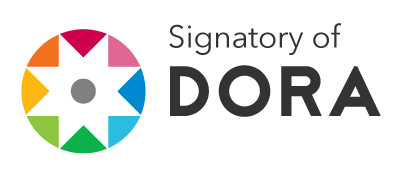Cucumber vs Ants: a Case Against the Myth of the Uses of Plant Extracts in Insect Pest Management
DOI:
https://doi.org/10.13102/sociobiology.v68i2.5813Keywords:
olfaction, ants, Formicidae, repellencyAbstract
An accumulation of questionable scientific reports on the use of natural plant extracts to control household pest insects, using biologically irrelevant experimental designs and extremely high concentrations, has resulted in a publication bias: “promising” studies claiming readily available plants can repel various insects, including social insects, despite no usable data to judge cost-effectiveness or sustainability in a realistic situation. The Internet provides a further torrent of untested claims, generating a background noise of misinformation. An example is the belief that cucumbers are “natural” ant repellent, widely reported in such informal literature, despite no direct evidence for or against this claim. We tested this popular assertion using peel extracts of cucumber and the related bitter melon as olfactory and gustatory repellents against ants. Extracts of both fruit peels in water, methanol, or hexane were statistically significant but effectively weak gustatory repellents. Aqueous cucumber peel extract has a significant but mild olfactory repellent effect: about half of the ants were repelled relative to none in a control. While the myth may have a grain of truth to it, as cucumber does have a mild but detectable effect on ants in an artificial setup, its potential impact on keeping ants out of a treated perimeter would be extremely short-lived and not cost-effective. Superior ant management strategies are currently available. The promotion of “natural” products must be rooted in scientific evidence of a successful and cost-effective implementation prospect.
Downloads
References
Amer, A. & Mehlhorn, H. (2006). Repellency effect of forty-one essential oils against Aedes, Anopheles, and Culex mosquitoes. Parasitology Research, 99: 478. doi: 10.1007/s00436-006-0184-1
Carroll, S. P. & Loye, J. (2006). PMD, a Registered Botanical Mosquito Repellent with Deet-Like Efficacy. Journal of the American Mosquito Control Association, 22: 507-514, 508. doi: 10.2987/8756-971X(2006)22[507:PARBMR]2.0.CO;2
Centers for Disease Control and Prevention (CDC) (2019). CDC Yellow Book 2020: Health Information for International Travel. New York: Oxford University Press, 721p.
Clark, J. & Smith, R. (2015). Firm action needed on predatory journals. British Medical Journal, 350: h210. doi: 10.1136/bmj.h210
Francl, M. (2013). How to counteract chemophobia. Nature Chemistry, 5: 439-440. doi: 10.1038/nchem.1661
Gore, J. C. & Schal, C. (2004). Laboratory Evaluation of Boric Acid-Sugar Solutions as Baits for Management of German Cockroach Infestations. Journal of Economic Entomology, 97: 581-587. doi: 10.1093/jee/97.2.581
Johnson, S.B., Park, H.S., Gross, C.P. & Yu, J.B. (2017). Use of alternative medicine for cancer and its impact on survival. Journal of the National Cancer Institute, 110: 121-124. doi: 10.1093/jnci/djx145
Klotz, J., Greenberg, L. & Venn, E. C. (1998). Liquid Boric Acid Bait for Control of the Argentine Ant (Hymenoptera: Formicidae). Journal of Economic Entomology, 91: 910-914. doi: 10.1093/jee/91.4.910
Kurt, S. (2018). Why do authors publish in predatory journals? Learned Publishing ,31: 141-147. doi: 10.1002/leap.1150
Maugh, T.H. (1982). To attract or repel, that is the question. Science, 218: 278-278. doi: 10.1126/science.218.4569.278
Monte, P., Woodard, C., Ayer, R., Lilly, M., Sun, H. & Carlson, J. (1989). Characterization of the larval olfactory response in Drosophila and its genetic basis. Behavior Genetics, 19: 267-283. doi: 10.1007/BF01065910
Prasanna Kumar, K., Murugan, K., Kovendan, K., Naresh Kumar, A., Hwang, J.-S. & Barnard, D. R. (2012). Combined effect of seaweed (Sargassum wightii) and Bacillus thuringiensis var. israelensis on the coastal mosquito, Anopheles sundaicus, in Tamil Nadu, India. Science Asia, 38: 141-146. doi: 10.2306/scienceasia1513-1874.2012.38.141
Scriven, R. & Meloan, C.E. (1984). (E, Z)-2, 6-nonadien-1-al and (E)-2-nonen-1-al present in crushed cucumbers are natural repellents for the american cockroach (Periplaneta americana). The Ohio Journal of Science, 84: 82-85.
Shelomi, M. (2020). Who’s afraid of DEET? Fearmongering in papers on botanical repellents. Malaria Journal, 19: 1-3. doi: 10.1186/s12936-020-03217-5
Weigmann, K. (2018). The genesis of a conspiracy theory. EMBO Reports, 19: e45935. doi: 10.15252/embr.201845935
Wetterer, J.K. (2007). Biology and impacts of Pacific Islandinvasive species. 3. The African big-headed ant, Pheidole megacephala (Hym.: Formicidae). Pacific Science, 61: 437-456. doi: 10.2984/1 534-6188(2007)61[437:BAIOPI]2.0.CO;2
Zavrel, E. (2016). Pedagogical techniques employed by the television show “MythBusters”. The Physics Teacher, 54: 476-479. doi: 10.1119/1.4965268
Downloads
Published
How to Cite
Issue
Section
License
Sociobiology is a diamond open access journal which means that all content is freely available without charge to the user or his/her institution. Users are allowed to read, download, copy, distribute, print, search, or link to the full texts of the articles in this journal without asking prior permission from the publisher or the author. This is in accordance with the BOAI definition of open access.
Authors who publish with this journal agree to the following terms:
- Authors retain copyright and grant the journal right of first publication with the work simultaneously licensed under a Creative Commons Attribution License that allows others to share the work with an acknowledgement of the work's authorship and initial publication in this journal.
- Authors are able to enter into separate, additional contractual arrangements for the non-exclusive distribution of the journal's published version of the work (e.g., post it to an institutional repository or publish it in a book), with an acknowledgement of its initial publication in this journal.
- Authors are permitted and encouraged to post their work online (e.g., in institutional repositories or on their website) prior to and during the submission process, as it can lead to productive exchanges, as well as earlier and greater citation of published work (See The Effect of Open Access).



 eISSN 2447-8067
eISSN 2447-8067










